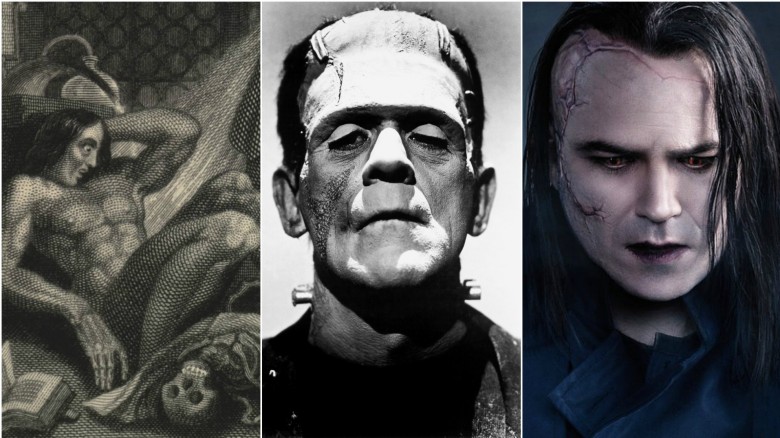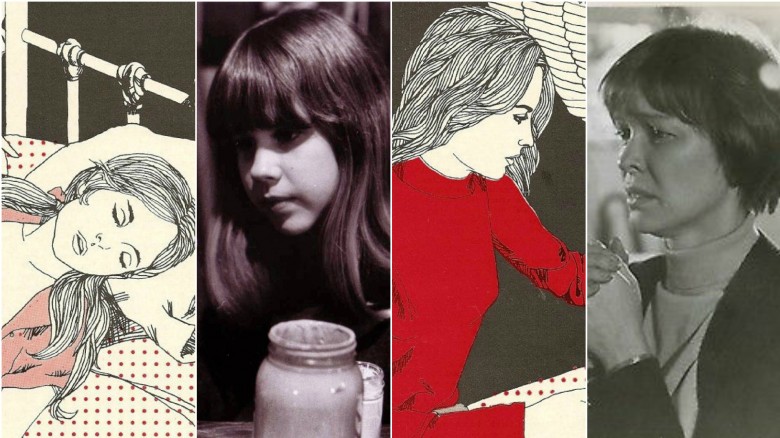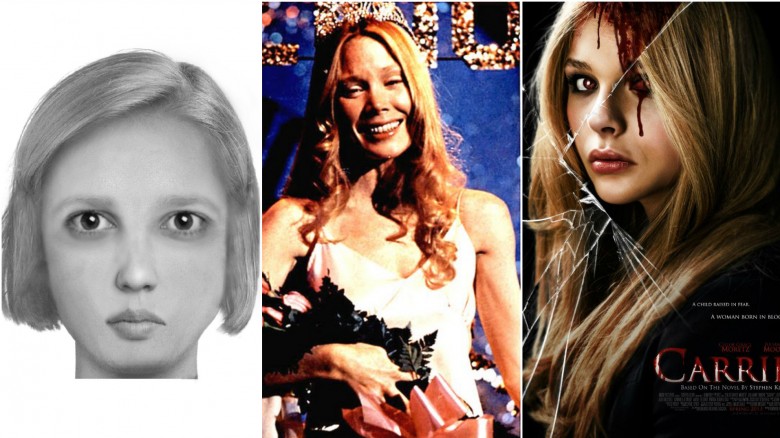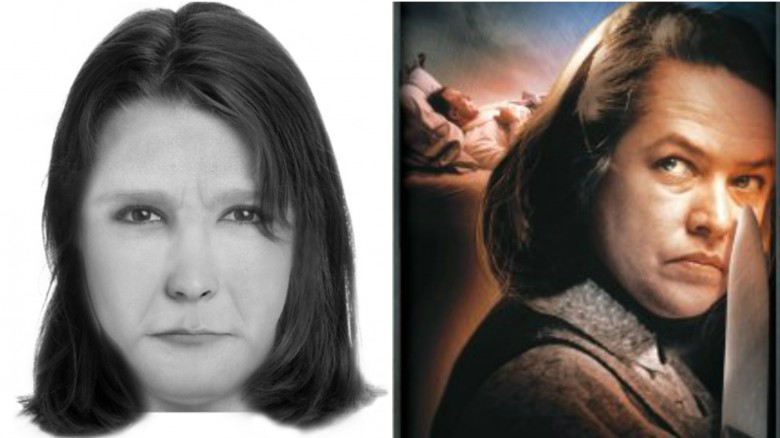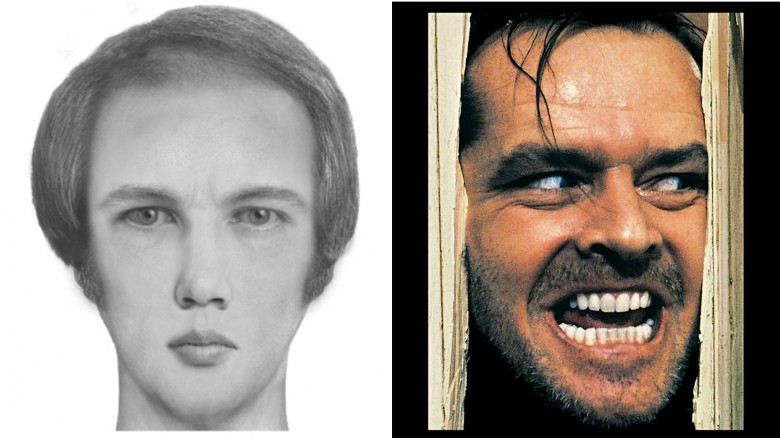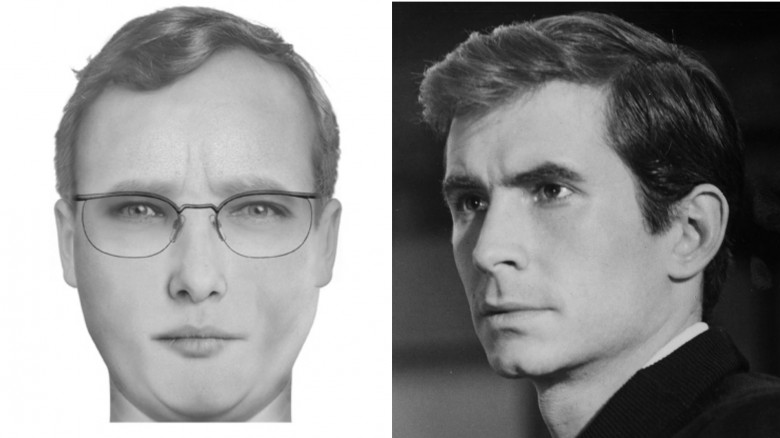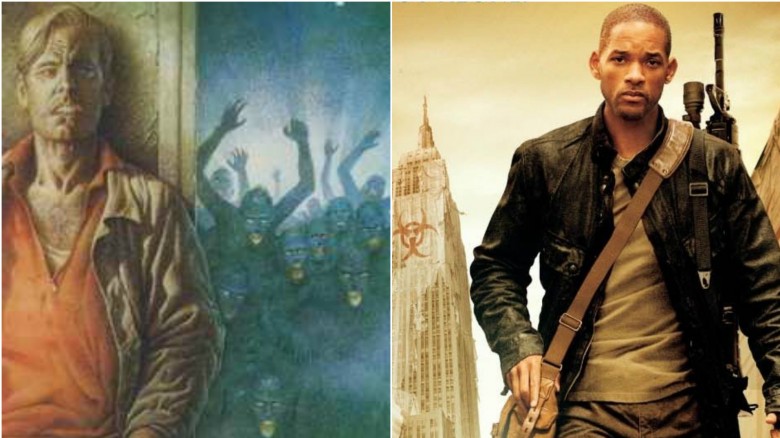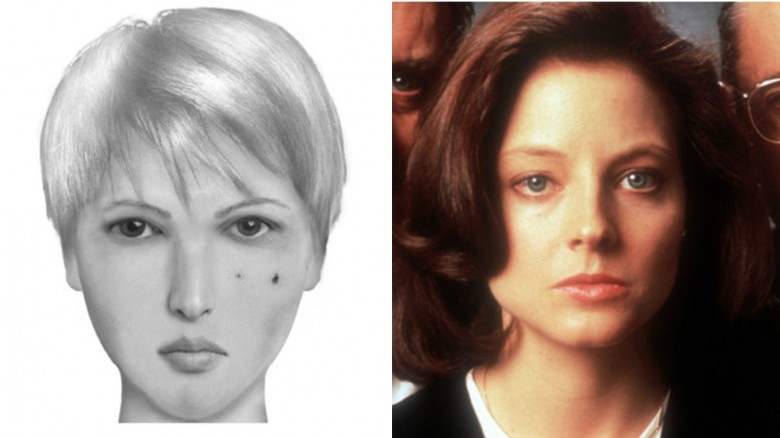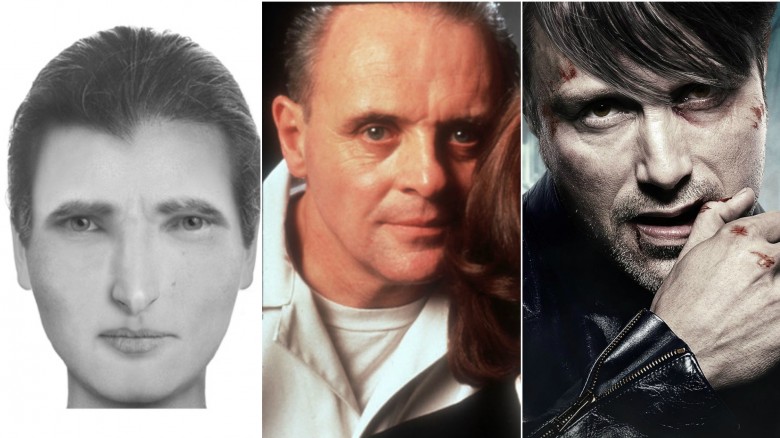How Horror Movie Characters Should Really Look
All horror movie buffs have their favorites, but there are some movies every fan of the genre has seen. Everyone has a very, very clear image of Norman Bates, of their favorite Hannibal Lecter, and everyone knows which Dracula is lurking in their shadows. But sometimes, the authors had very different ideas of what their most famous—or infamous—characters should look like.
Frankenstein's Creature (Frankenstein and Penny Dreadful)
You're probably pretty familiar with the fact that the big green guy who doesn't have great communication skills isn't actually Frankenstein, even though there's still a significant part of the population that insists on calling him that. We all know what he looks like, but our vision is drawn mostly from Boris Karloff's appearance in Universal's horror movie take on the creepy legend. Makeup artist Jack Pierce was responsible for the look in its entirety, from the bolts in his neck to the stitches, the skin color, and the lurch. That's all Pierce, and it kind of makes sense. It looks better on the screen, after all, because if you do some digging through Mary Shelley's original text, you'll find a Creature that has more in common with Penny Dreadful's Rory Kinnear than Karloff's creation.
According to the novel, the body Victor Frankenstein chose to revive had been selected for its beautiful features, and that made it all the more horrible when it finally rose. The good doctor writes of his horror in seeing what he created, and notes not green skin but thin, yellow skin, so thin that the veins beneath are visible. His hair is black — one of the only things that usually remains unchanged across the incarnations of the Creature — and that makes his skin look that much worse. Shelley writes, "[...] his teeth of a pearly whiteness; but these luxuriances only formed a more horrid contrast with his watery eyes, that seemed almost of the same colour as the dun white sockets in which they were set, his shrivelled complexion and straight black lips."
Regan and Chris MacNeil (The Exorcist)
When it comes to iconic horror, there aren't many films that even rank anywhere near The Exorcist. Adapted from William Peter Blatty's equally terrifying novel, it continues to captivate audiences—there's a reason people still make a pilgrimage to that set of outdoor steps decades after it first hit the big screen—but it wasn't entirely faithful to the book.
Ellen Burstyn starred as Chris MacNeil, actress and mother to the 12-year-old Regan. Her brunette pixie cut is a far cry from her character's original, "perpetually tousled" red hair. She's described thoroughly enough in Blatty's original, as he writes of her small, freckled face and a cigarette habit that would undoubtedly make her look older than she really is.
Linda Blair's Regan is similarly brunette, but she's described in the original novel as having her mother's red hair (presumably long, as she's first seen with ponytails), and the same freckled face. It's commonplace today to see actors and actresses playing characters well outside of their own age range, but Blair was only 13 years old when she played the 12-year-old Regan.
Carrie White (Carrie)
Stephen King's Carrie has been brought to the big screen a couple of different times, in very different ways. The first was 1976's Carrie, with Sissy Spacek in the title role. At a glance, she was absolutely perfect, ethereal and otherworldly—but King himself said she looked nothing like the way he envisioned the character. The novel's Carrie was "a chunky girl, with pimples on her neck, back and buttocks." The incredibly slender Spacek was also about ten years older than the novel's Carrie—26 when they started filming. She brought something else to the role, too: a face and mannerisms that made her much, much more sympathetic than King's original version. Audiences felt for Carrie, and felt a bit of triumph when she finally had her revenge on those who had been so cruel to her for so long. That was all Spacek.
In 2013, it was remade with blonde badass Chloë Grace Moretz, who looks even less like her novel counterpart. As The Wrap argued, Moretz is a fine actress, but she made Carrie less convincing as a social misfit and outsider.
The best description of King's Carrie comes when Tommy approaches her to ask her to prom and realizes for the first time that she's not as horrible as her hateful classmates make her out to be. King writes, "Her face was round rather than oval, and the eyes were so dark that they seemed to cast shadows beneath them, like bruises." He goes on to describe dark blonde, wiry hair, long enough to be pulled back into a bun, full lips, white teeth, and 1950s-era fashion Tommy notices is hiding a form that's not entirely unattractive. He sees something else, too: dignity.
Annie Wilkes (Misery)
She was Paul Sheldon's number one fan, and not in a good way. Misery—the book and the movie—featured one of King's most popular devices, a setting that's incredibly small and claustrophobic. In this case, it's made that way by Annie Wilkes. Kathy Bates was cast in the 1990 movie, and she captured the backwoods insanity of her knife-wielding, bone-breaking novel counterpart with terrifying accuracy.
In the novel, Annie tells an injured Paul that she's paid homage to his own main character, Misery, by naming a pig after her. She's a bit worried that he might be offended, but he thinks it's an eerily fitting name, especially when Annie does her imitation of the pig. King writes, "He remembered how she had imitated it, the way her upper lip had wrinkled toward her nose, how her cheeks had seemed to flatten, how she had actually looked like a pig for a moment: Whoink! WHOINKK!"
It's completely unflattering, for sure, but everything so is everything else in his description of Wilkes. Scattered throughout the book are other references to her: her helmet-like hair, "fungus-frowzy," her big frame, white brow, flaring nostrils, and a stony countenance. He describes her eyes, too, writing, "If he had been a farmer observing a sky which looked the way Annie's face looked right now, he would have gone to collect his family and herd them into a storm cellar." Her eyes are "tarnished dimes" not quite hidden under "the shelf of a brow" giving her a distinctly animalistic appearance.
Dracula
Everyone knows what Dracula should look like, with his dark hair, pallid complexion, and sharp teeth, probably hidden behind a cloak-draped arm. He—or rather, Bela Lugosi—made the widow's peak terrifying, if not cool, and regardless of how many incarnations or other vampires follow, he's forever the Dracula. By the time Christopher Lee donned the cape and put on the teeth in his own horror movie, we all knew what we should expect.
Only...not. Take a look at Bram Stoker's original text, and you'll find a vampire lord that looks very, very different. In the guise of Jonathan Harker's journal, Stoker writes, "Within, stood a tall old man, clean shaven save for a long white moustache, and clad in black from head to foot, without a single speck of colour about him anywhere." Until Harker steps inside, he stands as still as a statue, his form rigid enough to draw special attention. Once inside, his gestures are courteous, graceful, welcoming, charming, and after Harker's first dinner, he and the Count retire to the fireplace, and he finally has the chance to describe his host with exacting detail.
Harker—and Stoker—describe a strong face, a thin, aquiline nose with arched nostrils, a domed forehead, and hair that grew thick everywhere but his temples. The Count sported massive, bushy eyebrows that were nearly a unibrow, a cruel-looking mouth (with the tips of his pointed teeth visible over his lips), and ruddy lips that added to the paleness of the rest of his complexion. His ears, he notes, were pointed, his chin broad, his cheeks thin. He comments then on his hands, and sees that while he thought they were delicate and white, they are, in fact, "rather coarse—broad, with squat fingers." He notices hairs growing from Dracula's palms, and long nails cut to a point. His breath was horrible to the point of causing nausea, and when the Count sits back, Harker says that it's clear the Count has been aware of every single thing he's observed, including the surreal sort of vitality he sees reflected in the old man's face.
Jack Torrance (The Shining)
Jack Nicholson's version of the patriarch that ruled The Shining's Overlook Hotel for a few long winter months is so quintessential that it's impossible to think of anyone else in the role. King himself famously hated the adaptation, in spite of the fact that it was pretty universally lauded by everyone else. Jack Torrance was at the heart of King's issues with the film, and he's stated that he'd intended for the character to try to be good, but slowly be driven mad. That's a sharp contrast to Nicholson's Torrance who, let's face it, is cuckoo from the first.
Everything about the film Torrance just screams crazy, and that's to be expected from the original Joker, after all. But turn to the text and you find that King had something very different in mind for Torrance... although there were still the occasional hints that there was something dark beneath the surface.
Almost immediately King writes, "[...] Jack flashed the PR smile again, large and insultingly toothy." It's a go-to look for Torrance, and when he looks at his son, he describes himself in the ever-so-slight differences he sees between his own reflection and the boy's face. King's Torrance describes himself as having the same fair complexion, blue eyes, a bow-shaped mouth, and hair that hung over his eyes to give him a sort of animalistic appearance. While you can see traces of the general idea in Nicholson's Torrance, he's still definitely not what King envisioned.
Norman Bates (Psycho)
Psycho is right up there with The Exorcist as a must-watch film for any horror buff, and it's so iconic that it's easy to forget that it's based on a book of the same name. Written by Robert Bloch, the novel starts off in such a way that it's obvious there's more than a little something off about Norman Bates. He's 40 years old, as he notes when he says that he's lived in the same house—with Mother—for his entire life. Sitting in the parlor, he has a book on his "ample lap," and he's further described as having a plump face, but it's more than that. With sandy blond hair quickly approaching some level of baldness, his pink scalp shows through his hair. He wears rimless glasses, and the book he's reading? He's fascinated by the descriptions of Incan rituals, flayed skins, and dead, swollen bodies. His half-closed eyes and his shiver completes the picture that's about more than just a physical appearance.
It's about an aura, and that's what Anthony Perkins nails in his version of Norman Bates. He might not physically look anything like the character Bloch had in mind, but it's the sense that there's something off about him that makes this one completely work.
Robert Neville (I Am Legend)
At a glance, I Am Legend is one of many horror movies that deal with the end of the world, and the fall of humanity as we know it. The world has been taken over by monsters created by man, and really, that's all you need to know. But there's another camp that argues the entire thing is a commentary on racial tensions in America, and that makes the schism between the Robert Neville of the book and the Neville of the film that much more drastic.
While Will Smith plays the title character in the movie, his character is a New York City virologist holding out hope for survivors and for a cure. In the book, Neville isn't so clearly defined, and he's taken up shelter in his own home, haunted by the remains of his wife and the taunts of an old friend.
According to the text, Richard Matheson has envisioned his hero (or antihero, depending on your own point of view), as "[...] a tall man, thirty-six, born of English-German stock, his features undistinguished except for the long, determined mouth and the bright blue of his eyes [...]" Since he uses garlic to help keep the creatures of the night at bay, he constantly smells of it, but stopped noticing a long time ago. Later, when Neville heads to the bathroom to get ready for bed, Matheson adds another detail: a tattoo of a cross on his chest, a reminder of a drunken night in Panama.
Clarice Starling
As with her nemesis, there are a few different film and television versions of Clarice Starling, and few references to what she actually looks like in Silence of the Lambs. We get a bit more in Hannibal, as Barney Hersh catalogues the appearance of guests on the opening night of an opera in Buenos Aires. He sees one woman that catches his eye, her hair styled into a platinum blonde helmet, a beauty mark on her cheek, and muscled arms not hidden by her dress. He notes that she gives off an aura of being in absolute control of everything—including every one of those muscles—and it's those few things that allow him to identify her as Starling.
Earlier in Hannibal, Jack Crawford remarks on the gunpowder residue that's still buried in her cheek, a reminder of her encounter with Jame Gumb, and notes that it's appropriately in a spot that indicates courage. By now, she's 32 years old, and Thomas notes that she made any age look good.
Hannibal Lecter
When it comes to the differences in appearance between actor and character, Hannibal Lecter is a bit of an oddity. Not only has he been portrayed by a range of actors in various horror movies and television projects, but Thomas Harris was still writing about him—and getting more and more specific about Lecter's appearance—even after movies had been filmed. In Silence of the Lambs, there was only a minimal amount of description even when he's first introduced to Clarice Starling. She notes that he's "small, sleek; in his hands and arms she saw wiry strength." She also notes his strange maroon eyes, and that when the light reflected off them, they created red spots of light that looked like sparks.
Hannibal's maroon eyes are mentioned throughout the books, and Red Dragon echoes the idea that he's a small, wiry man with an air of neatness about him. In Hannibal, he's explained just a bit more, described as "slender and elegant," with a head "sleek as an otter" and a nose that had "an imperious arch." It was the way that he carried himself that made him look bigger than he really was, implying that Hannibal's personality defines the way people see him as much as his physical appearance.

